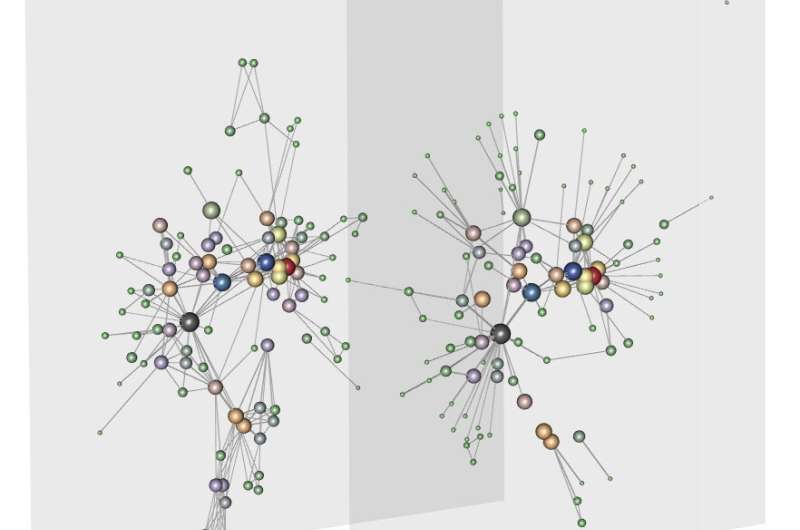Networks of meetings and phone calls obtained from the datasets of wiretaps and stakeouts. Credit: Cavallaro et al, 2020
New simulations suggest that law enforcement efforts to disrupt Sicilian Mafia activity could benefit from analytical strategies that capture the shortest paths of information flow that Mafia members maintain to minimize risk of interception. Lucia Cavallaro of the University of Derby, U.K., Annamaria Ficara of the University of Palermo, Italy, and colleagues present these findings in the open-access journal PLOS ONE on August 5, 2020.
Social network analysis can help clarify complex relationships between many individuals. However, criminal networks like the Sicilian Mafia have unusual features that make them both difficult to analyze and resilient to disruption. There is also a shortage of data on the internal structure of Mafia networks.
To improve understanding of criminal networks, Cavallaro and colleagues compiled new datasets from wiretaps and stakeouts involving two Mafia clans that infiltrated economic activities in southern Italy in the early 2000s. They used the data to simulate the criminal network and compared different ways of measuring an individual's influence within it to see which approach was most effective for selecting targets for individual arrests or police raids.
The researchers found that a network measure approach called "Betweenness centrality" was most effective for selecting targets to disrupt the simulated network, due to its strength in capturing Mafia relationships designed to avoid interception of information by ensuring it flows along paths that are as short as possible. These findings suggest that law enforcement operations employing social network analysis might benefit from applying Betweenness centrality or similar measures.
The authors have made their new datasets and source code publicly available online. Future research could expand on the new findings, such as by investigating how a criminal network might reorganize after disruption or how it might react to removal of an individual with a particularly specialized area of expertise.
More information: Cavallaro L, Ficara A, De Meo P, Fiumara G, Catanese S, Bagdasar O, et al. (2020) Disrupting resilient criminal networks through data analysis: The case of Sicilian Mafia. PLoS ONE 15(8): e0236476. doi.org/10.1371/journal.pone.0236476
Journal information: PLoS ONE
Provided by Public Library of Science






















